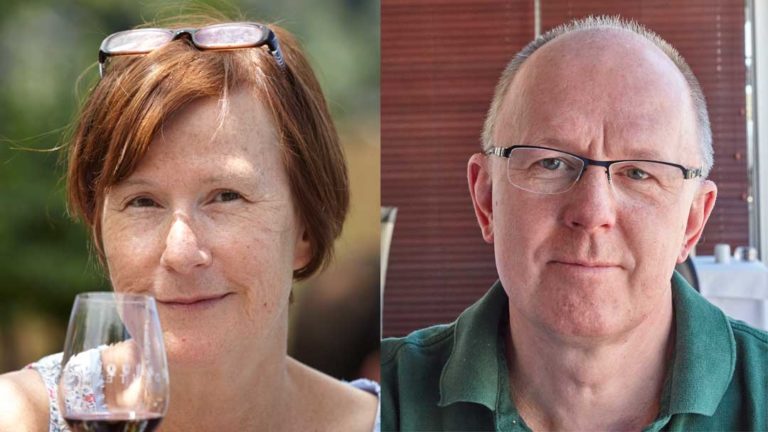

 The impossible and absurd objectivity
The impossible and absurd objectivity
No, it is impossible to judge wine after a neutral and objective quality scale. But first…
Is it important for the wine consumer if a wine has a “medal” in a wine competition? Some think it’s irrelevant. Another point of view that we often hear is “a medal! Then at least I know that some people thought this wine was good.”
If a medal sticker on the bottle is important or not varies widely from market to market. A report published recently by the American Association of Wine Economist concludes that a medal-winning wine can raise the price by an average of 13%.
I recently participated in the judging panel (the “jury”!) at one of the world’s biggest wine competitions. A pleasant form of jury duty. I was the only Swedish juror actually. The Concours Mondial de Bruxelles had nearly 10,000 competing wines this year, tasted and rated by 300 judges. It actually took place in Beijing!
There were, of course, many discussions about different things around wine. An interesting question that came up was “Can you judge a wine ‘objectively’ and ‘neutrally’, or is it always ‘subjective’?”
To me, it’s simple: there is no objective or neutral quality scale for wine. It is always about personal preferences, tastes, likes and dislikes. I am often surprised at how many people do not agree with me.
Many say “I can put my personal preferences aside and assess the quality objectively.” But I do not understand how that can be possible.
For example, we had a flight of wines where many had a lot of oak barrel character. I’m not very fond of lots of oak, so those wines got quite low marks from me. How else could it be? Should I be able to judge if the oak is “skilfully managed” even if I think it’s too dominant and gives an imbalance to the wine? How much oak is “an appropriate level” of oak? Surely, everyone must agree that a wine can have too much oak, but how much is too much? So, how much oak, and what style of oak that is good is always personal.
Another example: Wines with some oxidized character (think of old, very ripe winter apples). I think it can often give an interesting edge to the wine. Say, for example, Jura wines, sherry, many skin-macerated whites, etc. But from an “objective” point of view, one can consider it a defect. Who is right? (And let’s not get into natural wines again…)
This is a discussion one often gets entangled in when you taste with technically educated oenologists. They tend to assess the wines purely on technical parameters. Does the wine have any hint of defects? Is the wine “clean” and technically well-made? For sure, you can score based on such an angle, but it can result in high marks for wines that have no personality and are quite boring. But faultless. Of course, it is important if the wine is technically more or less correct or has obvious defects, but this does not say much about the actual wine-drinking experience, the pleasure.
No, all quality assessment of wines is subjective, based on the taster’s own preferences, what the wine taster / writer / wine judge likes and dislikes. Just like, for example, music, food, architecture, movies, books and so on. Who would get the idea that literary fiction can be evaluated and measured “objectively”?
And it was exactly that that the medal (or the high score) was about. “At least, some people thought that this wine was good!”
Finally:
Take a look at the autumn (and winter) wine tours. It is high time to book a trip this fall now. Some are already fully booked. Right now, for example, is the last chance to join our South Africa tour in November (with whales!). There is a lot to choose from! Take a look at the programs and book now!
Britt & Per
PS: Recommend to your friends to read the Brief !
– – – – – –
What’s on at BKWine Tours
Autumn 2018
- Champagne, September 26-30
- Bordeaux, October 10-14
- Douro Valley in Portugal, October 17-21
- South Africa, November 9-19
Winter 2019
- Chile-Argentina, January 20 – February 4, 2019
- South Africa, February 16-24, 2019
- New Zealand, March 11-26, 2019
For more information please contact us on email or on phone (we’re on French time), or go to our wine travel site on www.bkwinetours.com!
We also make custom designed wine tours – on-demand tours for you and a group of friends, for your company (maybe to scout new winegrowers?), for a special event… We can combine winery visits and wine touring with other activities: gastronomic workshops, visit to an oyster farm, truffles hunting, cheese making, and more. More info on the custom designed and bespoke BKWine wine tours and travel here!
Read our book(s)
We have written several wine books, nine at the last count. One of them has been translated to English; the others are (so far) only available in Swedish. This is the one that is available in English: Biodynamic, Organic and Natural Winemaking, Sustainable Viticulture and Viniculture
All our books are on wine, but on different subjects: wines of the Languedoc, wine growing and wine making, the wines of France, Tuscany, Bordeaux, Piedmont, Burgundy, Champagne. Several have won prestigeous prizes and awards. Read more on our wine books.
From the World of Wine
In Brief
In short, news and stuff from the world of wine.
Champagne-Goliath has draconian demands on IGP Ile-de-France-David
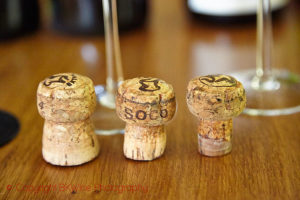 IGP Ile de France is close to an agreement with Champagne. IGP Ile-de-France is a new IGP since 2017. Ile-de-France is the region around Paris and a (very small) part of the vineyards is actually in Paris suburbs. With new plantations in progress, the IGP may soon be around 70 hectares. But the new IGP have a powerful neighbour in the East to deal with.
IGP Ile de France is close to an agreement with Champagne. IGP Ile-de-France is a new IGP since 2017. Ile-de-France is the region around Paris and a (very small) part of the vineyards is actually in Paris suburbs. With new plantations in progress, the IGP may soon be around 70 hectares. But the new IGP have a powerful neighbour in the East to deal with.
Ile-de-France shares a border with Champagne. Le Comité Champagne (CIVC) watches very closely what happens outside its borders. It does not want to have any wine production too close. Discussions between Champagne and IGP Ile-de-France have been ongoing for some time. They have now agreed to have a buffer zone around the Champagne appellation where IGP Ile de France cannot produce any wine. In addition, Ile de France is willing to refrain from planting Chardonnay in some municipalities, also a demand from Champagne. This is really David against Goliat. 70 hectares against 34,000 hectares. How can Champagne even feel threatened? It is only the latest example in a long series of how Champagne uses (abuses?) its might and power to restrain other appellations. Read more: vitisphere.com
Come on the wine tour to Champagne this autumn and taste the Goliath bubbly on site.
Renaissance for wine from Zimbabwe; celebrating with sparkling?
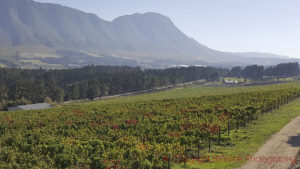 Wine production conditions have hardly been ideal in recent decades, but now that there is light at the end of the tunnel, at least one producer has decided to blow life in the dormant wine industry in Zimbabwe. Jonathan Passaportis, owner of Winelands of Bushman Rock, the almost only surviving vineyard, believes in Zimbabwe’s future as a wine country. With a combination of wine and amazing scenery he wants to attract tourists back to Zimbabwe. Winelands of Bushman Rock has grown wine since the 1930s and was one of the first vineyards in the country with grapes such as semillon, sauvignon blanc, merlot, cabernet franc, moscatel, and alicante bouschet. According to the blog Glass of Bubbly, Bushman Rock will start producing sparkling wine in 2019.
Wine production conditions have hardly been ideal in recent decades, but now that there is light at the end of the tunnel, at least one producer has decided to blow life in the dormant wine industry in Zimbabwe. Jonathan Passaportis, owner of Winelands of Bushman Rock, the almost only surviving vineyard, believes in Zimbabwe’s future as a wine country. With a combination of wine and amazing scenery he wants to attract tourists back to Zimbabwe. Winelands of Bushman Rock has grown wine since the 1930s and was one of the first vineyards in the country with grapes such as semillon, sauvignon blanc, merlot, cabernet franc, moscatel, and alicante bouschet. According to the blog Glass of Bubbly, Bushman Rock will start producing sparkling wine in 2019.
There will be obstacles along the way. People with knowledge of wine making have left the country in recent decades and it is difficult to get equipment to the cellars. The climate in Zimbabwe is also not as suitable as it is in the Western Cape in South Africa. But if there’s a will… Read more: glassofbubbly.com
Join us on the tour, not in Zimbabwe, but certainly in South Africa! Now is the last chance is to sign up for the November wine tour to South Africa. But in February 2019 we also have a South Africa wine tour.
Mini-Prosecco will be served on French TGV trains
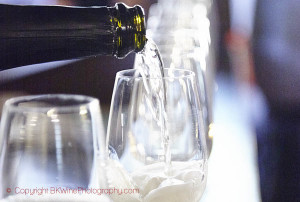 Champagne producers would like to make us believe that Prosecco’s huge successes does not affect champagne. That champagne and prosecco play in different leagues. It is possible, but hard to believe 100%. At least Prosecco has now succeeded with the feat of entering the French high speed TGV train bistro wagons. You can now buy a mini bottle (20 cl) of “Bottega Il Vino dei Poeti” Prosecco DOC on the TGV trains and our guess is that the little bottle will sell like hot cakes. Much more prosecco than champagne is produced today (475 million bottles compared to 320 m, according to Drinks Business), although counted in value Champagne is bigger (for the moment?).
Champagne producers would like to make us believe that Prosecco’s huge successes does not affect champagne. That champagne and prosecco play in different leagues. It is possible, but hard to believe 100%. At least Prosecco has now succeeded with the feat of entering the French high speed TGV train bistro wagons. You can now buy a mini bottle (20 cl) of “Bottega Il Vino dei Poeti” Prosecco DOC on the TGV trains and our guess is that the little bottle will sell like hot cakes. Much more prosecco than champagne is produced today (475 million bottles compared to 320 m, according to Drinks Business), although counted in value Champagne is bigger (for the moment?).
Come on the wine tour to Champagne this autumn and taste the French luxury bubbly on site.
Sacy, a rare grape in northern Burgundy
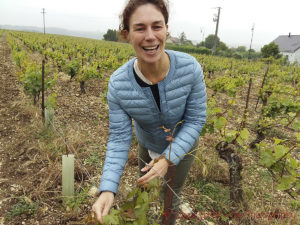 Unusual grapes can pop-up when you least expect it. On one of our tours in Chablis in the spring, a little-known grape called sacy made an appearance during the tasting of Domaine Frédéric and Céline Gueguen. Of course, this was not a Chablis. Some Chablis producers, including Domaine Gueguen, also make wine outside the Chablis border, in the region called Auxerrois, named after the city of Auxerre.
Unusual grapes can pop-up when you least expect it. On one of our tours in Chablis in the spring, a little-known grape called sacy made an appearance during the tasting of Domaine Frédéric and Céline Gueguen. Of course, this was not a Chablis. Some Chablis producers, including Domaine Gueguen, also make wine outside the Chablis border, in the region called Auxerrois, named after the city of Auxerre.
The little plot of sacy is a vineyard that Céline took over after her mother in the small village of Saint Bris le Vineux. “We’re the only ones who make a 100% sacy,” says Céline, who wants to save the grape from extinction. In 1958, the total area in France was 650 hectares, now it is under 50 ha. It is a dry, light wine with good acidity, aromas of white flowers and green apples and low alcohol content, only 11%. Sold for 8 euros at the domain. The appellation is Coteaux Bourguignon.
The world’s wine consumption has grown a tiny little bit in 2017
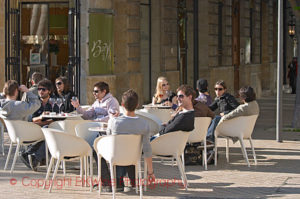 IWSR, an English company specializing in market research in the beverage industry, has published figures for global alcohol and wine consumption in 2017. Total alcohol consumption increased very modestly by 0.01%, but as it decreased in 2016, this small increase is still positive for the industry. It was mainly wine and cider that accounted for the increase.
IWSR, an English company specializing in market research in the beverage industry, has published figures for global alcohol and wine consumption in 2017. Total alcohol consumption increased very modestly by 0.01%, but as it decreased in 2016, this small increase is still positive for the industry. It was mainly wine and cider that accounted for the increase.
Wine increased by 0.5%. The countries where wine consumption increased the most were Italy, Russia and the United States. The figures for Great Britain showed a slight decreased except for sparkling wines. And the French apparently drink more and more beer. More info: theiwsr.com
Oil spray in the vineyard to fight weeds
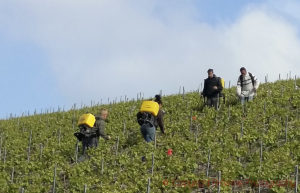 During our spring wine tours we have visited the small and interesting Champagne house Philipponnat. On our visit in early May we saw people working in their prestigious vineyard Clos des Goisses with knapsack sprayers on their backs. Obviously they were doing some kind of treatment. It turned out to be weed control with a natural product called Beloukha, allowed in Europe since 2015. The active substance in Beloukha is an extract from rapeseed oil. The oil is sprayed on the ground and after a couple of hours the leaves, but not the roots, dry out and die. The product can also be used for épamprage which means removing parasite shoots from the trunk of the vine. The company behind this product, Jade, has apparently tried to have Beloukha approved for organically certified vineyards too but has not yet succeeded although the product is from rapeseed. Here’s a fascinating video on how it works.
During our spring wine tours we have visited the small and interesting Champagne house Philipponnat. On our visit in early May we saw people working in their prestigious vineyard Clos des Goisses with knapsack sprayers on their backs. Obviously they were doing some kind of treatment. It turned out to be weed control with a natural product called Beloukha, allowed in Europe since 2015. The active substance in Beloukha is an extract from rapeseed oil. The oil is sprayed on the ground and after a couple of hours the leaves, but not the roots, dry out and die. The product can also be used for épamprage which means removing parasite shoots from the trunk of the vine. The company behind this product, Jade, has apparently tried to have Beloukha approved for organically certified vineyards too but has not yet succeeded although the product is from rapeseed. Here’s a fascinating video on how it works.
Wine Fair with Swedish (!) wines on July 27-28
Sometimes people as “Do you make wine in Sweden?” A fair question. The climate is obviously not ideal. The answer is “Yes.” I believe there is well less than 100 hectares in total, but quite a few producers. If you happen to be in the south of Sweden on July 27-28 you have a unique opportunity to taste something rather rare, Swedish wines, made from Swedish grapes. The wine fair “Smaka Svenska Viner” (Taste Swedish Wines) will take place on these dates at the winery Skepparps Vingård which is situated in the southeast of Skåne.
The following Swedish wineries will be present with their wines, all made from grapes grown in Sweden: Skepparps Vingård, Flyinge Vingård, Flädie Vinproduktion, Kullahalvöns Vingård, Vingården i Klagshamn, Snårestads Vingård, Åhus Vingård, Skillinge Vingård and Österlenvin. Around 25-30 wines will be available for tasting. More info: vinfestivalosterlen.se.
Wine Fair with wines from Armenia, Georgia, Macedonia and Moldova, on June 8
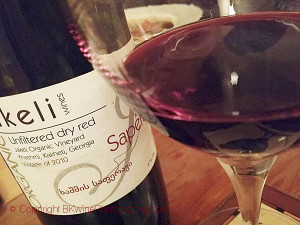 Armenia, Georgia, Macedonia and Moldova all make wine but they are completely unknown as wine countries to most wine consumers. They now work together to market their wines. The wine industries in the four countries have gained momentum in recent years, and now they want to develop both their exports and their tourism. Georgia is already a big name in wine circles, not least thanks to the interesting kvevri wines. Together, these countries grow more than 500 local grape varieties, such as Areni, Saperavi, Vranac, Karmrahyut and Feteasca. These are wines for the wine lover who seeks the unusual. BKWine has had the opportunity to visit wineries and taste wine in Moldova (but unfortunately not in the other countries) and we can confirm that they make some very interesting wines.
Armenia, Georgia, Macedonia and Moldova all make wine but they are completely unknown as wine countries to most wine consumers. They now work together to market their wines. The wine industries in the four countries have gained momentum in recent years, and now they want to develop both their exports and their tourism. Georgia is already a big name in wine circles, not least thanks to the interesting kvevri wines. Together, these countries grow more than 500 local grape varieties, such as Areni, Saperavi, Vranac, Karmrahyut and Feteasca. These are wines for the wine lover who seeks the unusual. BKWine has had the opportunity to visit wineries and taste wine in Moldova (but unfortunately not in the other countries) and we can confirm that they make some very interesting wines.
On June 8, 40 wine producers from these countries will present their wines at the Radisson Blu Hotel in Vilnius, Lithuania. More info baltic-road-show-vilnius
Hail storms again, and rain
A very violent hailstorm with huge hailstones hit Bordeaux on May 26th. It is as yet unclear how many hectares of vineyards have been affected, but probably at least a few thousand in southern Médoc, Bourg, Blaye and in Charente, the Cognac region. Vines that would have been in bloom the following week have now lost all their leaves. Also parts of the Vallée de la Marne and the Côte des Bar in Champagne have been hit by hail. A few days later some other parts of France, notably Burgundy, had heavy rainstorms that also caused damage, and also in the Douro Valley… It will be a tough year again for many wine producers. Read more: sudouest.fr
Features
Features that we have published during the past month, with lots of reading for you.
Sicilian entrepreneurs create wine, food and travel experiences
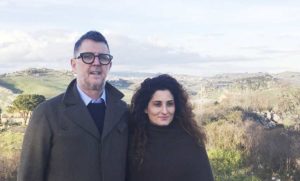 “This is not the story of the Sicilians that decided to stay and try to change things from within. It is not the story about those who decided to leave, trying to start over. Instead, this is the story of those who left, became successful, and chose to come back.”
“This is not the story of the Sicilians that decided to stay and try to change things from within. It is not the story about those who decided to leave, trying to start over. Instead, this is the story of those who left, became successful, and chose to come back.”
Read Åsa Johansson’s article on BKWine Magazine about these exciting personalities that makes Sicily a great wine and food destination: Sicily – The Home-comers. A story about those who chose to come back.
We sometimes organise spectacular wine tours to Sicily and also very popular wine tours to many Italian wine regions.
Mexican wine challenges beer and tequila | Britt on Forbes
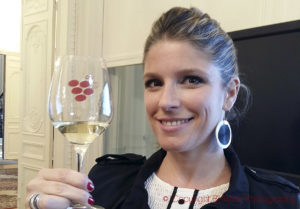 “Few people would think of Mexico as a wine-producing country. Apart from the fact that Mexico is on the same latitude as northern Sahara this is a beer drinking-country and on top of that, world-famous for its tequila. Does wine really have any chance of success? ‘Absolutely,’ says Cristina Pino, a Spanish oenologist who came here from Spain seven years ago. She now works for wine producer Monte Xanic. ‘Mexico is a small wine country,’ she says, ‘but with our different terroirs we can produce a multitude of wine styles.’ “
“Few people would think of Mexico as a wine-producing country. Apart from the fact that Mexico is on the same latitude as northern Sahara this is a beer drinking-country and on top of that, world-famous for its tequila. Does wine really have any chance of success? ‘Absolutely,’ says Cristina Pino, a Spanish oenologist who came here from Spain seven years ago. She now works for wine producer Monte Xanic. ‘Mexico is a small wine country,’ she says, ‘but with our different terroirs we can produce a multitude of wine styles.’ “
Read more on Britt’s article on BKWine Magazine, originally published on Forbes: Mexico is an interesting wine country | Britt on Forbes.
Tolaini – back to the roots in Chianti Classico
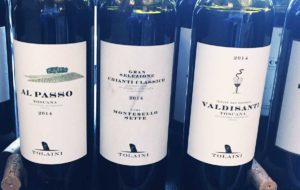 “Pierluigi Tolaini bought a one-way ticket to Canada when he was twenty years old. When he returned to Tuscany it was for making wine. Of the highest quality. Join us on a journey between Tuscany and Canada. Pierluigi Tolaini was only 20 years old when he left Tuscany for Canada in 1956. -He had bought a one-way ticket, says daughter Lia Tolaini when we meet at the five-star Hotel Villa Cora in Florence.The Tolaini family is one of many examples of Italians who sought luck in America, and succeeded. Pierluigi Tolaini started working as a truck driver, opened his own company, eventually becoming one of North America’s largest transport companies.”
“Pierluigi Tolaini bought a one-way ticket to Canada when he was twenty years old. When he returned to Tuscany it was for making wine. Of the highest quality. Join us on a journey between Tuscany and Canada. Pierluigi Tolaini was only 20 years old when he left Tuscany for Canada in 1956. -He had bought a one-way ticket, says daughter Lia Tolaini when we meet at the five-star Hotel Villa Cora in Florence.The Tolaini family is one of many examples of Italians who sought luck in America, and succeeded. Pierluigi Tolaini started working as a truck driver, opened his own company, eventually becoming one of North America’s largest transport companies.”
BKWine Magazine’s Åsa Johansson tells the story: Tolaini – back to the roots in Chianti Classico.
Come on one of our wine tours to Tuscany to discover some of the best wines in this beautiful region.
Mandranova – High-quality Sicilian extra virgin olive oil
 “How many Sicilian olive varieties do you know? Here are five examples of excellent extra virgin olive oil made with five different varieties on the biggest island in the Mediterranean. The farm Mandranova is one of Sicily’s most appreciated olive oil producers. It is run by Giuseppe and Silva Di Vincenzo, their beautiful farm is not far from the city of Agrigento, about one and a half hours drive from the Catania Airport. (If you drive like an Italian.) -We have no olive oil left to sell, laughs Giuseppe di Vincenzo when we meet in February 2018.”
“How many Sicilian olive varieties do you know? Here are five examples of excellent extra virgin olive oil made with five different varieties on the biggest island in the Mediterranean. The farm Mandranova is one of Sicily’s most appreciated olive oil producers. It is run by Giuseppe and Silva Di Vincenzo, their beautiful farm is not far from the city of Agrigento, about one and a half hours drive from the Catania Airport. (If you drive like an Italian.) -We have no olive oil left to sell, laughs Giuseppe di Vincenzo when we meet in February 2018.”
BKWine Magazine’s Åsa Johansson goes olive oil tasting: Mandranova – High-quality Sicilian extra virgin olive oil.
We sometimes organise spectacular wine tours to Sicily and also very popular wine tours to many Italian wine regions.
Weingut Künstler, an artist in the Rheingau
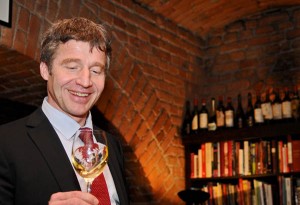 “The artist himself, Gunter Künstler, is CEO of the company since 1992. He presented in a very humble manner six rieslings from different years and places and two spätburgunders (pinot noir). Gunter told me that there are documents showing that spätburgunder has existed in the Rheingau since the 12th century. However, Weingut Künstler’s history in Hochheim dates back to 1965, when Fritz Künstler established himself in the area after being expelled from the Czech Republic after the end of World War II.”
“The artist himself, Gunter Künstler, is CEO of the company since 1992. He presented in a very humble manner six rieslings from different years and places and two spätburgunders (pinot noir). Gunter told me that there are documents showing that spätburgunder has existed in the Rheingau since the 12th century. However, Weingut Künstler’s history in Hochheim dates back to 1965, when Fritz Künstler established himself in the area after being expelled from the Czech Republic after the end of World War II.”
Read more on Künstler and his wines in Carl-Erik Kanne’s article on BKWine Magazine: Weingut Künstler, an artist in the Rheingau.
Uncorked: Good wines we have tasted recently, May 2018
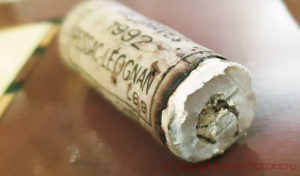 Uncorked: Under this heading we collect various wines that we have tasted, and liked, recently. It can be wines that we have had during dinner at home, at wine tastings, press lunches, visits to vineyards, or other occasions. Some inspiration for more wine discoveries! As well as a perspective on what to expect from older wines. This month: Some older wines that have aged well, sometimes surprisingly well. For example, a 14-year-old Sancerre, a 16 year old Riesling, a 19 year old Macabeu and a 26-year-old white Bordeaux. Among the reds a superb Chinese, an exciting Mourvèdre from Cyprus, a beautiful old Beaujolais and much more.
Uncorked: Under this heading we collect various wines that we have tasted, and liked, recently. It can be wines that we have had during dinner at home, at wine tastings, press lunches, visits to vineyards, or other occasions. Some inspiration for more wine discoveries! As well as a perspective on what to expect from older wines. This month: Some older wines that have aged well, sometimes surprisingly well. For example, a 14-year-old Sancerre, a 16 year old Riesling, a 19 year old Macabeu and a 26-year-old white Bordeaux. Among the reds a superb Chinese, an exciting Mourvèdre from Cyprus, a beautiful old Beaujolais and much more.
Read our comments on BKWine Magazine: Uncorked: Good wines we have tasted recently, May 2018.
Birgit Braunstein from Burgenland in Austria with elegant and surprising wines
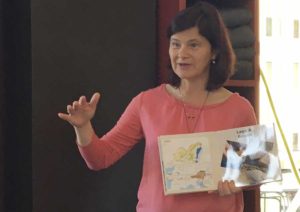 “Birgit is an extremely passionate wine maker who likes to talk about soil, biodynamics and terroir for hours, which almost became too much during our relatively short meeting. Mainly because I’ve heard that so many times before. Everything is about the wines and how the terroir is expressed in the final result, which she has been very successful with. Thankfully! Birgit Braunstein lives in the village of Purbach in Austria, located in the Burgenland region. Her family has a long tradition of growing grapes and making wine. The tradition goes back to the 17th century, but Birgit’s first vintage under her own name saw the light only in 1996.”
“Birgit is an extremely passionate wine maker who likes to talk about soil, biodynamics and terroir for hours, which almost became too much during our relatively short meeting. Mainly because I’ve heard that so many times before. Everything is about the wines and how the terroir is expressed in the final result, which she has been very successful with. Thankfully! Birgit Braunstein lives in the village of Purbach in Austria, located in the Burgenland region. Her family has a long tradition of growing grapes and making wine. The tradition goes back to the 17th century, but Birgit’s first vintage under her own name saw the light only in 1996.”
Read more in Mattias Schyberg’s article on BKWine Magazine: Birgit Braunstein from Burgenland in Austria with elegant and surprising wines.
Wine tours
Some information about current and future wine tours with BKWine.
Champagne goes with everything | wine tour
On our tour to Champagne you will discover many things about this bubbly wine. Not least the fact that you can drink it through an entire meal. You can actually combine champagne with many things since there are so many different styles of champagnes. The elegant style made from 100 % Chardonnay, the powerful style with mostly Pinot noir, the crispy, mineral style with no added sugar. The fruity fragrant style with a dominant of Pinot Meunier (a very under-rated variety!). And so on.
Older champagnes can even be served with red meat. During our superb lunches at the Champagne houses you will discover all this. We will taste a huge number of different Champagnes; we will meet ambitions wine makers and explore the beautiful vineyards of this famous region. The harvest is probably going on at this time so there will be a lot of action going on. Take a look at the wine tour program to Champagne and then get in touch with us to book your tour.
Bordeaux wine, wine for laying down but also, of course, for drinking | wine tour
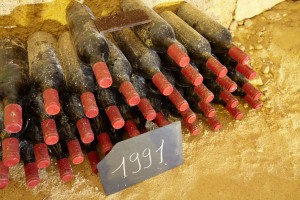 Many wine consumers associate Bordeaux wines with tannins and a long ageing. On our wine tour in Bordeaux in October you will discover for yourself if this is still true. During our tastings at high-class chateaux you will discover both young Bordeaux wines and older ones. What you prefer is a matter of personal taste. Wine does not necessarily have to be age-old to be delicious.
Many wine consumers associate Bordeaux wines with tannins and a long ageing. On our wine tour in Bordeaux in October you will discover for yourself if this is still true. During our tastings at high-class chateaux you will discover both young Bordeaux wines and older ones. What you prefer is a matter of personal taste. Wine does not necessarily have to be age-old to be delicious.
The work in the vineyard and in the cellars has changed over the years. Many things have changed in Bordeaux but not the fact that they make great wines. Our tour will take place during and just after the harvest. We cannot be sure yet, as the harvest date is set only a few weeks or even a few days in advance. But we can promise you a lot of activities in the cellars.
Join us on this exceptional wine tour to Bordeaux this fall and experience outstanding food and wine at fantastic chateaux.
Wine and whales on the wine tour in South Africa in November – LAST CHANCE!
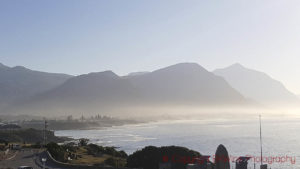 We usually don’t have the South Africa tour at this time of the year, but it is a fantastic time to discover this country. Early summer with lush landscapes, flowers, and vines that are growing rapidly. And it is whale season, so we have also arranged for a boat excursion to take a close look at these amazing animals. We will board a purpose-built catamaran that will take us on a two-hour cruise to see these giant animals.
We usually don’t have the South Africa tour at this time of the year, but it is a fantastic time to discover this country. Early summer with lush landscapes, flowers, and vines that are growing rapidly. And it is whale season, so we have also arranged for a boat excursion to take a close look at these amazing animals. We will board a purpose-built catamaran that will take us on a two-hour cruise to see these giant animals.
Discover the world-class wines in this charming wine country, where the wines just keep getting better. We will visit the classic Stellenbosch and Franschhoek, but also some exciting newcomers, like Walker Bay with Hemel en Aarde. Take a look at the full program for the November wine tour to South Africa here. Now is the last chance to book this tour, so make your booking NOW.
Winter long-distance wine tours: Chile-Argentina, South Africa and New Zealand
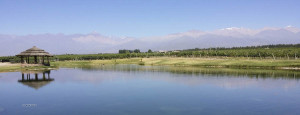 We begin 2019 with our popular wine tour to South America. We will visit the two most important wine countries there, Argentina and Chile. It is a spectacular tour with many meetings with passionate wine makers, gorgeous lunches and some “normal” sightseeing too. We will for instance visit the legendary harbour town of Valparaìso and we will cross the mighty Andes with our bus, a magnificent and very special experience. Get all details on the Chile-Argentina wine tour here.
We begin 2019 with our popular wine tour to South America. We will visit the two most important wine countries there, Argentina and Chile. It is a spectacular tour with many meetings with passionate wine makers, gorgeous lunches and some “normal” sightseeing too. We will for instance visit the legendary harbour town of Valparaìso and we will cross the mighty Andes with our bus, a magnificent and very special experience. Get all details on the Chile-Argentina wine tour here.
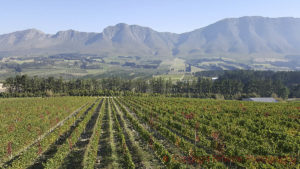 The second winter wine tour goes to South Africa in February 2019. We will meet some of the much talked about and very ambitious producers in world famous Stellenbosch and Franschhoek but also in the new and exciting Walker Bay on the south coast, including the stunning valley of Hemel-en-Aarde. Have you not yet discovered the world-class winemakers of South Africa, this is your opportunity, during the very busy and exciting harvest time. Take a look at the South Africa wine tour program here.
The second winter wine tour goes to South Africa in February 2019. We will meet some of the much talked about and very ambitious producers in world famous Stellenbosch and Franschhoek but also in the new and exciting Walker Bay on the south coast, including the stunning valley of Hemel-en-Aarde. Have you not yet discovered the world-class winemakers of South Africa, this is your opportunity, during the very busy and exciting harvest time. Take a look at the South Africa wine tour program here.
In March we will go even further away, to New Zealand. Its fame as a wine country is fairly new and the success on the export market is astonishing. We will enjoy many different producer visits and we will also have time to admire the amazing nature and to get to know the culture. The wine tour to New Zealand will take you to both the North and the South Island and to almost all of the famous wine regions, including Marlborough and Central Otago. It will be an unforgettable wine tour. Take a look at the New Zealand wine tour program here.
Don’t be an egoist! Share with your friends and other wine enthusiasts! Forward the Brief to your friends! Suggest that they sign up for a free subscription !
© Copyright BKWine


